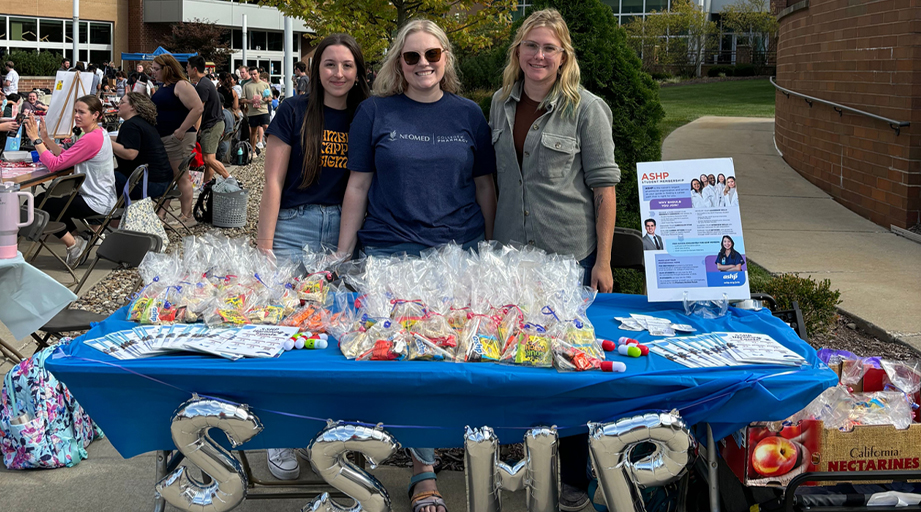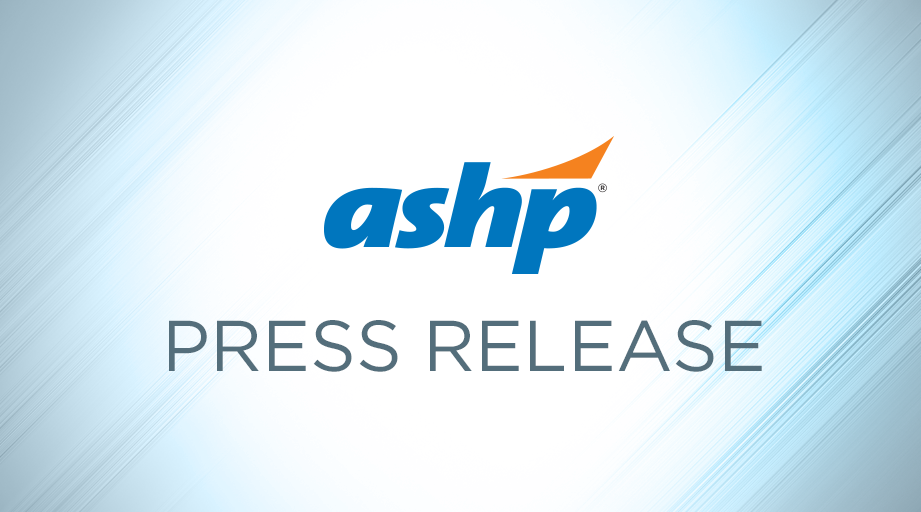
When he began his pharmacy residency, Chris Hall took an approach familiar to generations of young and ambitious healthcare professionals: “I put my head down,” he recalled, “and did the work.”
But six months into the rotations, research, and conferences of his postgraduate year 1 (PGY1) residency program, Hall realized that such a hard-charging approach can fall short when it comes to managing stress.
“I wouldn’t classify myself as having had any coping mechanisms,” said Hall. “There comes a point where you have to do something new.”
For Hall, that included attending a well-being workshop started by his residency program director at the University of Kansas (UK) Health System as well as enrolling in ASHP’s virtual Well-Being Ambassador (WBA) Program for residents.
“The world is stressful, even outside of residency,” said Hall, now a postgraduate year 2 (PGY2) resident in health-system pharmacy administration at UK. “I think I just needed to prepare myself, to make sure I have long-term plans in place for stress and anxiety.”
The pharmacy workforce continues to deal with high rates of occupational burnout, stress, and moral injury, which worsened during the COVID-19 pandemic due to challenging work environments, staff shortages, and increased work demands.
Pharmacy residents also face the challenges of working long hours in fast-paced healthcare settings, but with added educational and research requirements — and limited time for recovery. Even before the pandemic, surveys found pharmacy residents report levels of depressive symptoms that are higher than those of the general population.
Increasingly, residents’ mental health has become one focus of efforts to address the well-being of the workforce. As of this past July, ASHP-accredited residency programs must meet new well-being-related requirements, including incorporating assessments of residents’ well-being into quarterly development plans. And the residents-only cohort in ASHP’s WBA Program aimed to equip participants with personal well-being strategies and a roadmap for sparking changes within their organizations.
“Over the last several years, we have seen the stressors that healthcare workers have encountered within their careers that negatively impact their overall health and well-being. These stressors are encountered very early in a pharmacist’s career, especially within a residency program,” said Sam Calabrese, ASHP vice president for accreditation services. “As stewards of the future pharmacy practitioners, we owe our residents, and the patients they serve, the resources and tools to navigate challenging training environments and to create habits to foster wellness and resilience.”
Molly Wascher, the director for Johns Hopkins Care at Home’s community pharmacy administration and leadership residency program and an implementation coach in the WBA program, pointed out that the volume of work expected of residents can be extremely challenging.
“What makes it hard is that you’re new at all this so you’re much less efficient, much less confident about what you’re doing,” she said. “I think along with that is you’re shifting from being a student to being a pharmacist and that’s very uncomfortable at first. You’re now the one with the license, you’re now the one who’s the final check before it goes to a patient. That’s very different from when you are a student.”
None of that is new, she pointed out, but the healthcare industry now has research findings on the deleterious impact of stress on residents. With such information in hand, programs are compelled to act.
“The more we can get a workforce that’s able to be resilient,” she said, “the longer they’re going to stay in their career and practice in hospital pharmacy.”
At Ohio State University Medical Center, the pharmacy residency program in recent years stepped up efforts to foster bonding among the residents with various social gatherings and events, said Trisha Jordan, chief pharmacy officer. After the COVID-19 pandemic, however, leaders realized they needed even more help as healthcare workers experienced burnout and isolation.
““That sort of call to action, as to what we could do to support the residents really started to have a grassroots effort. It continued to evolve and grow,” Jordan said. “And where we are today compared to even where we were the last year or two, has really changed. It’s become much more formal.”
The program has a special committee called ResiShine (Support Health Initiatives and Nurture Excellence), which provides bonding activities and resources aimed at supporting physical and mental well-being. The committee, which consists of preceptors and residents, has put on kickball games, apple picking outings, and daily step competitions, said Jessica Elefritz, a critical care specialty practice pharmacist who helps lead the effort.
But on top of those types of activities, she said, program leaders design schedules that allow residents recovery time.
“There’s more of an acknowledgement that wellness is a component we need to be on the lookout for,” she said.
Annie Hiller was a PGY1 resident at Legacy Emanuel Medical Center in Portland, Oregon, when she completed the WBA program. She recalled being nervous about residency based on stories she had heard. Indeed, she said, the workload was heavy: rotations, topic discussions, presentations, research, weekend shifts.
Yet Hiller felt well-equipped. She had learned stress-reduction practices in WBA. Even more importantly, she said, her residency program director showed strong support for well-being issues, checking in with the six residents every two weeks.
“Her big thing was ‘Tell me what you did for yourself this last week. Where did you go, what did you do, did you guys spend time together?’” said Hiller. “She really encouraged all of us to spend at least one day a week being friends with each other.”
Hiller said she did develop deep friendships with fellow residents, and they leaned on one another during particularly stressful points of their residency. “In the (WBA) program, they brought up so many studies across professions that maintaining relationships and building connections with other people was one of the most important ways to decrease burnout, especially in residency where you can feel really isolated,” she said.
Hall agreed that mindfulness techniques he cultivated in the WBA program, along with the camaraderie with his fellow residents, helped him succeed in his first year. In addition to taking part in the program director’s workshop initiatives, his group also successfully advocated for a more flexible weekend rotation.
Such a sense of personal empowerment is a key emphasis of the WBA program, said Wascher. “I think a lot of people think that at the organization level, only managers and directors can be the ones influencing well-being,” she said. “But they’re not the only ones that create the atmosphere. Frontline staff can have an impact both on the culture and the way the workflow is developed.”









